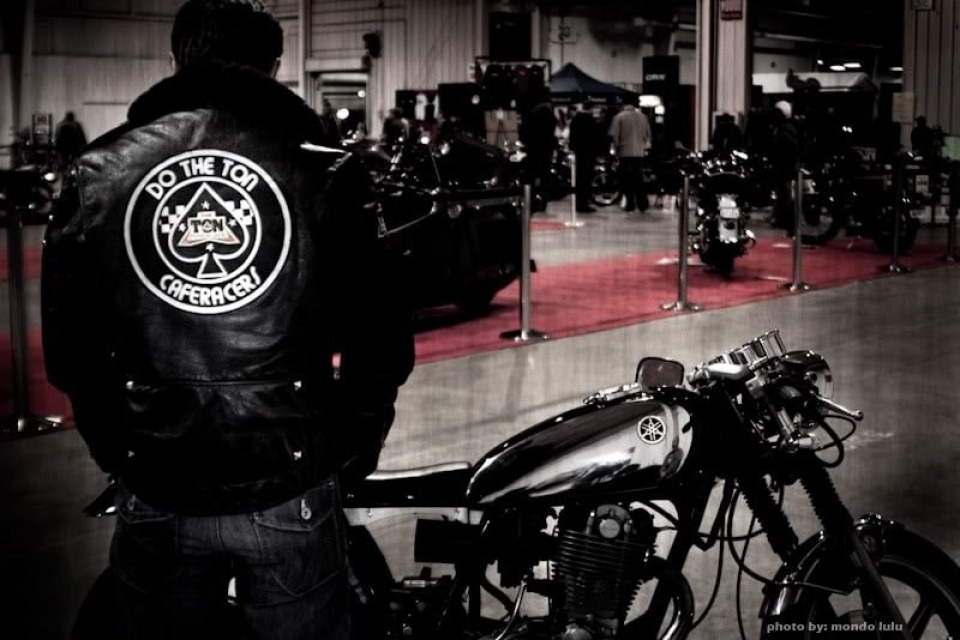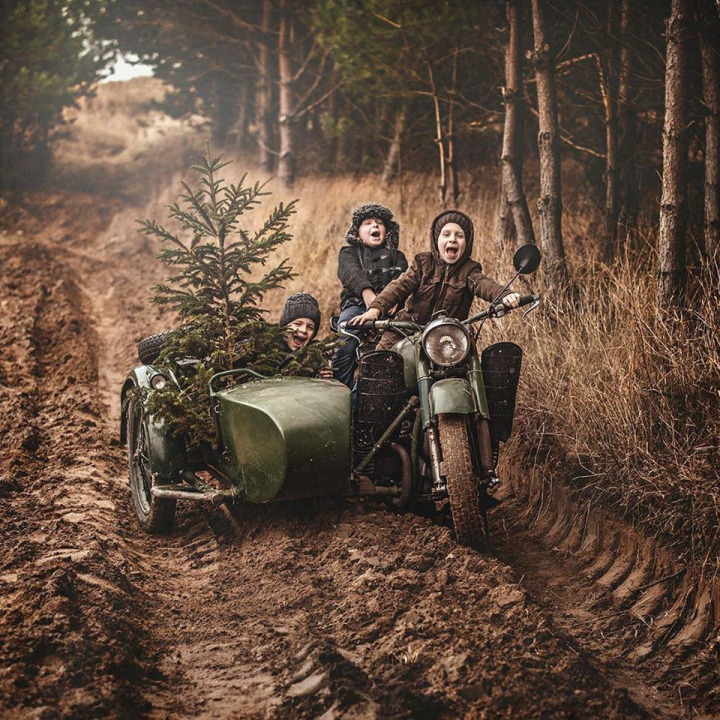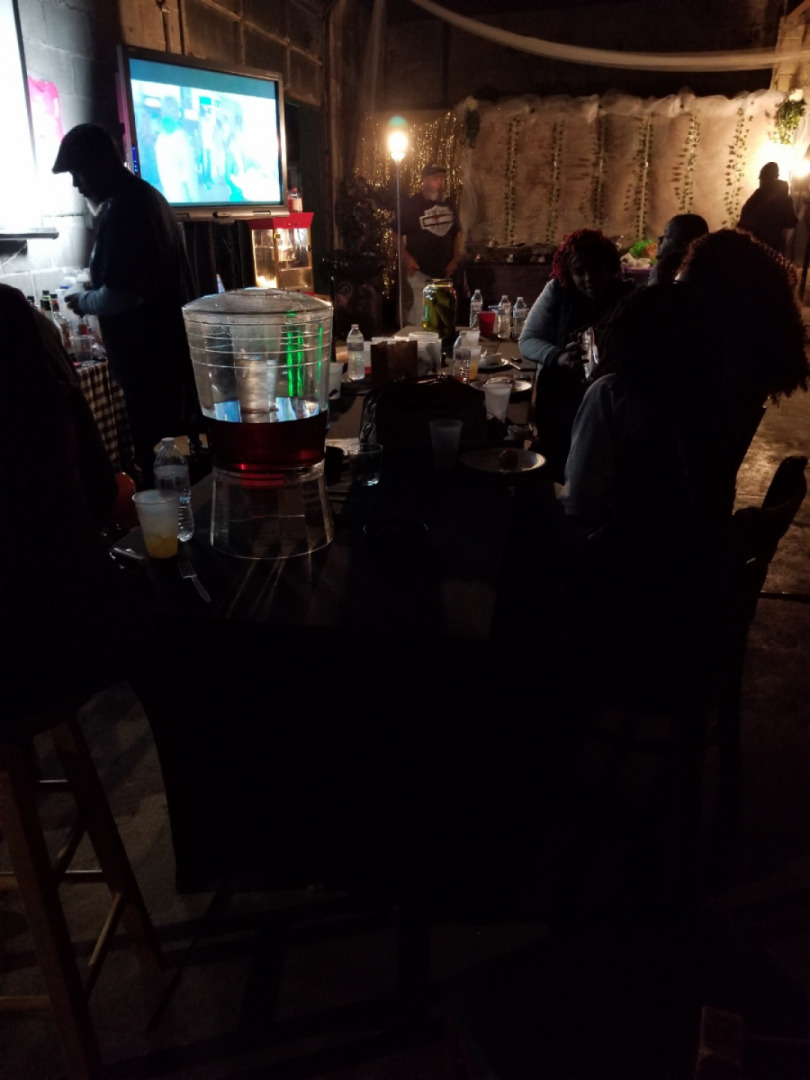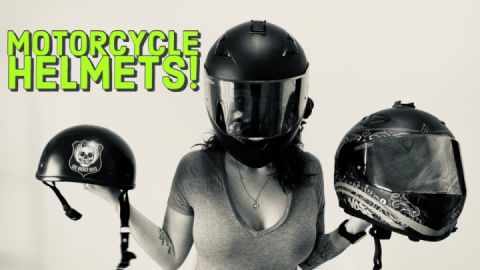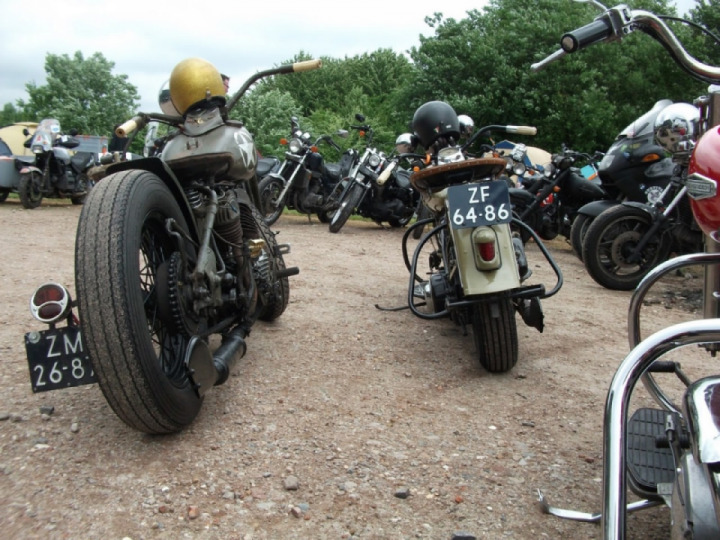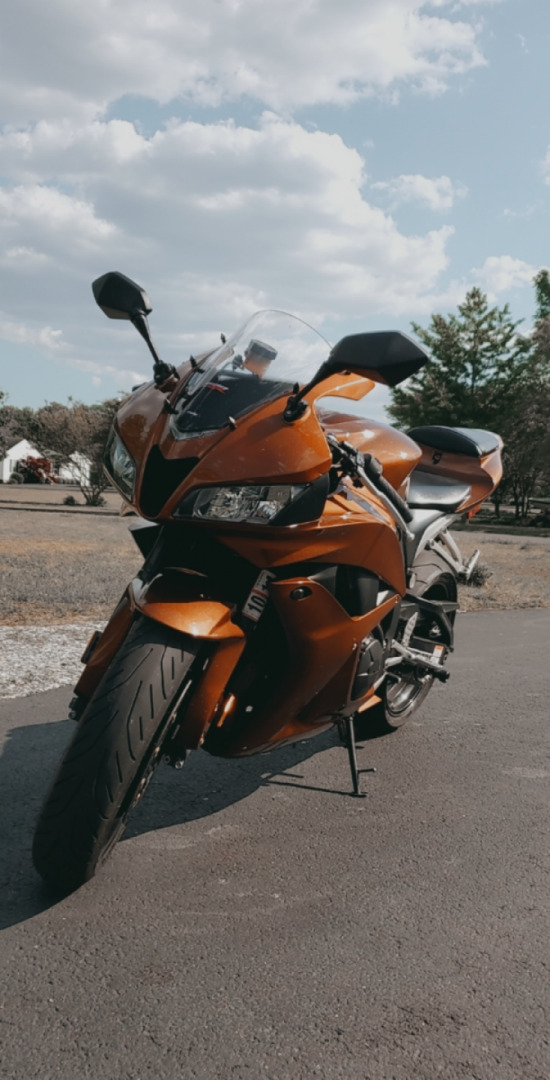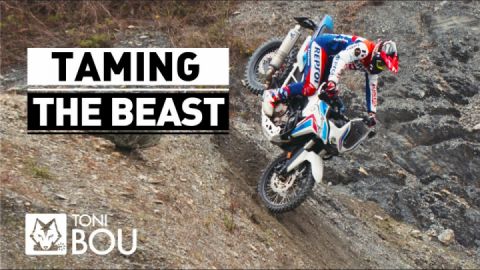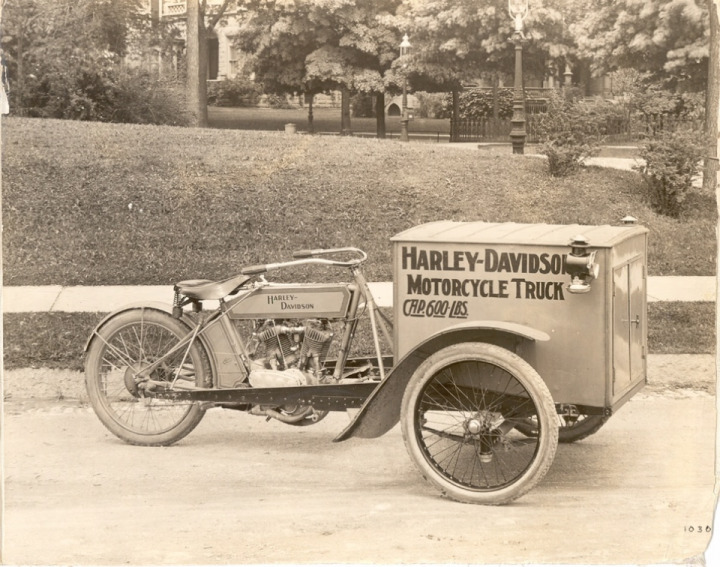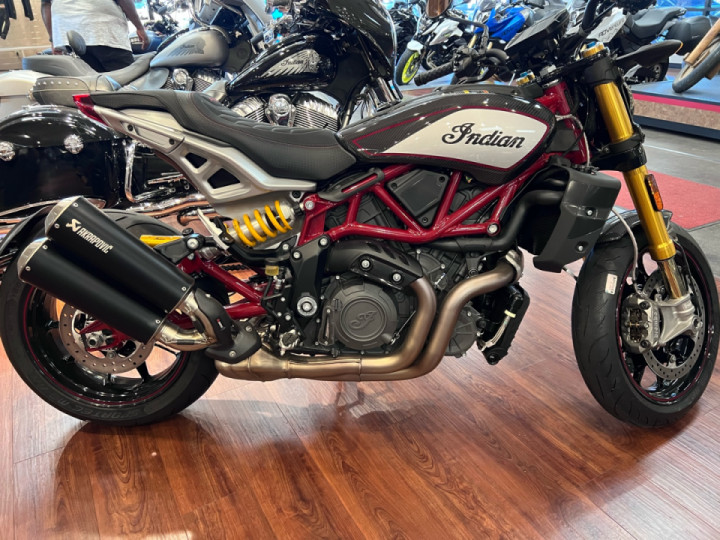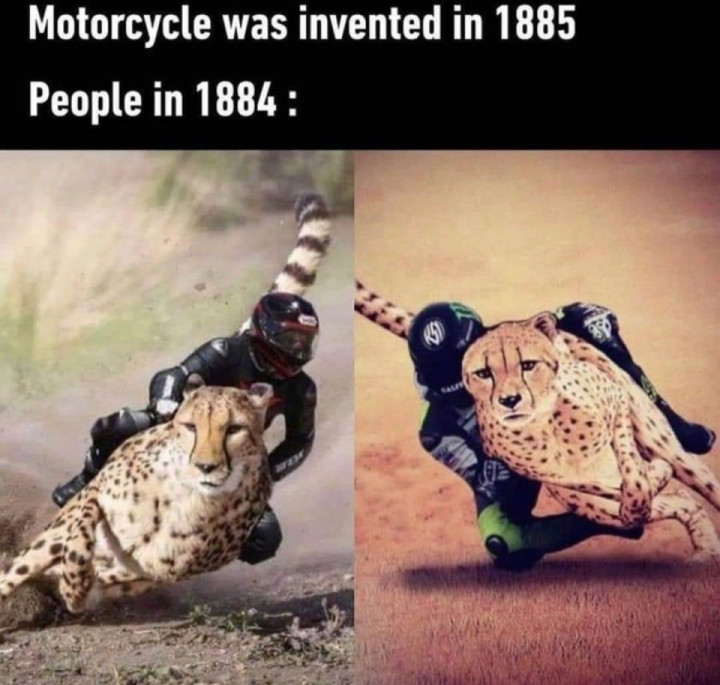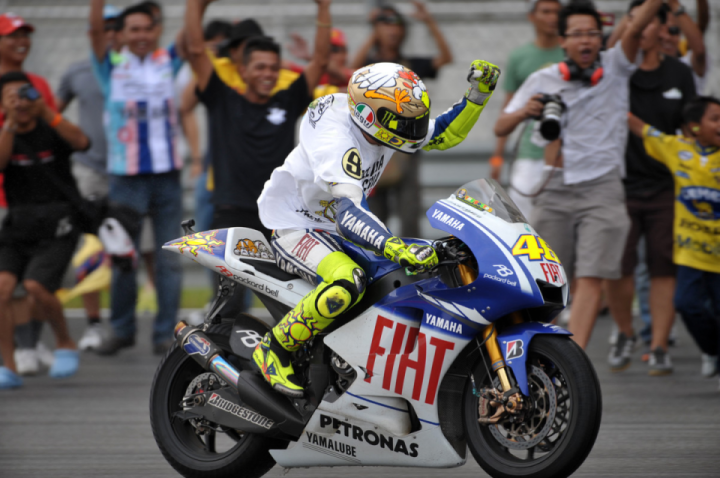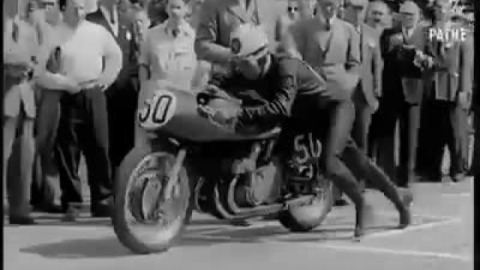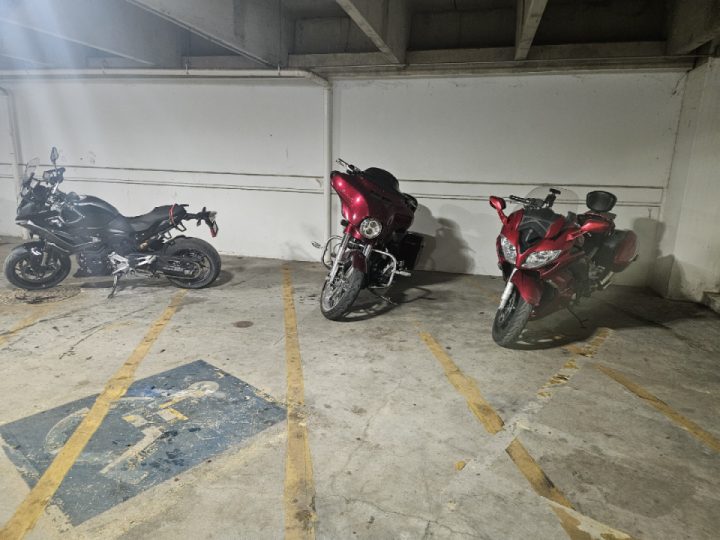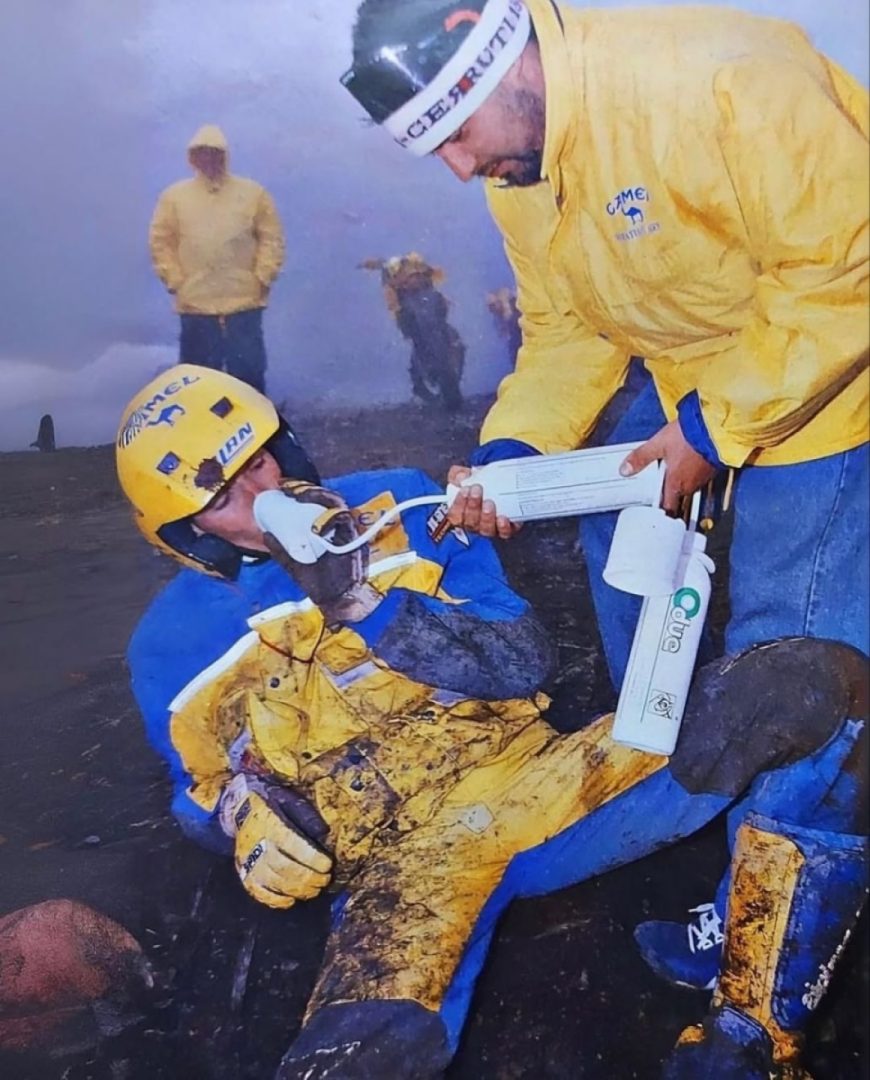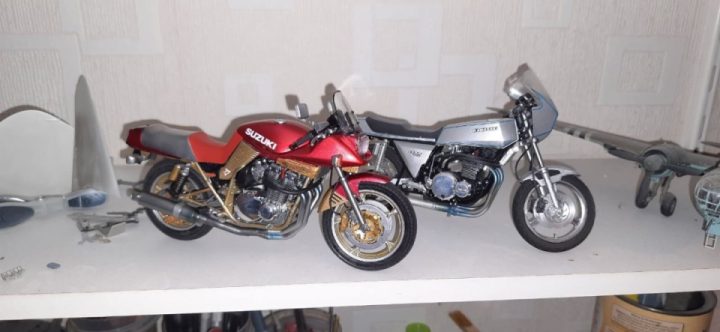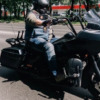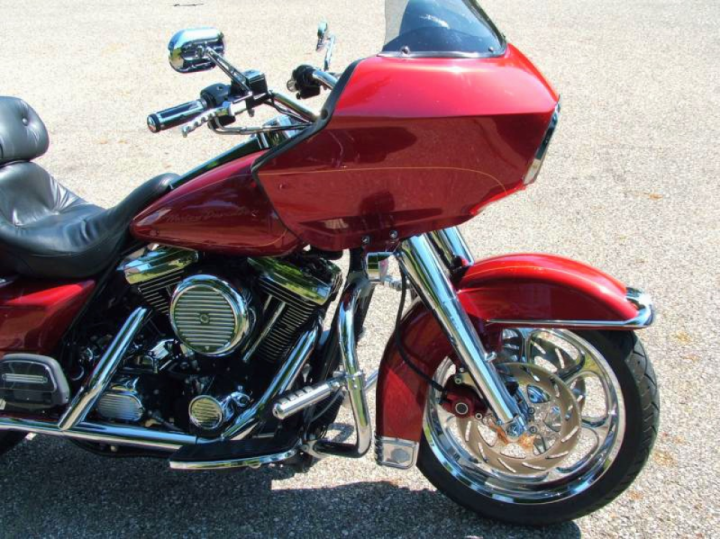The History of Do The Ton
The ‘Ton-Up Boys’ of the café racer culture became devoted to early American rock n’ roll music as much as they were to their own motorcycles. Outfitted in British Military surplus leathers, Brylcreem hair styles, and a deep fascination with those illustrious American tunes they heard at the Ace Café earned them the nickname the “Rockers,” and they started making front page headlines by the late 1950s. So named due to their penchant for tuning motorcycles to achieve 100 MPH – or “the Ton” in British slang – the name became a badge of honor for those capable of achieving this extraordinary, and dangerous, feat.
Modern sportbikes may reach triple digit speeds in third gear, but veteran Rockers say reaching 100 MPH with both man and machine intact was not for the faint hearted. “If you were on a Vincent twin or a well-tuned Norton or Triumph, 100 was like the four minute mile or supersonic flight – nearly impossible. But it was a fun thing to chase after,” veteran London rocker, Barry Cheese told us.
With Britain’s notorious tabloid newspapers in need of a new villain, the Rockers made a convenient target for exaggerated stories of death and destruction. The reputation of the Rockers took a severe beating when they began clashing with groups of scooter riding teens, known as Mods at seaside resorts in the early 1960’s. From Brighton to Margate and Southend, the accounts vary on how bad the violence really was. Nevertheless, the period helped solidify the Rocker’s rough and tough image.
Glynn Johnson, a Vincent riding rocker from that period, sums it up, “It’s what you might call tribal warfare. That’s all it is, two different groups of people who like different things, and, you know, kids growing up like a bit of a fight on Saturday night. I can remember days when I would, arrive in a town with a few mates on the bikes, as a Rocker, and you’d see the Mods there, and you’d stay out of the way; you’d get in trouble. There definitely was a war going on,” he said. In addition to clashes with the Mods, Rockers became known for playing other dangerous games. There were numerous reports of something called ‘Record Racing.’ Some say record racing was an exaggerated media story, while others claim it was commonplace at cafes across England.
At that time, the only place you could listen to rock n’ roll was the transport cafes. (Think Flying-J’s and truck stops here in America) Mark Wilsmore, owner of the Ace Café remembers it all centered around the jukebox. “Tracks were all about three minutes long; drop a coin in, and then out onto your bike, up to Hanger Lane, a big roundabout just west of the Ace, and then back again before the record finished. It’s just the recipe for carnage, basically.”
In those days, UK police cars were slow, unreliable little vehicles, most without onboard radios. Outrunning “The Old Bill” became another naughty game for the Rocker set, who were a constant presence at all-night cafes and truck stops throughout England. Despite the headlines and mounting pressure for helmet laws, a national speed limit, and a ban on motorcyclists younger than sixteen, there emerged a movement to rehabilitate the image of Rockers and their Café bikes. In 1962, a preacher by the name of Father Bill Shergold offered bikers a chance to congregate at his London parish. That was the start of The Fifty Nine Club, a church youth mission that attracted thousands of riders who performed good deeds and charity work aimed at improving the public reception of the café crowd.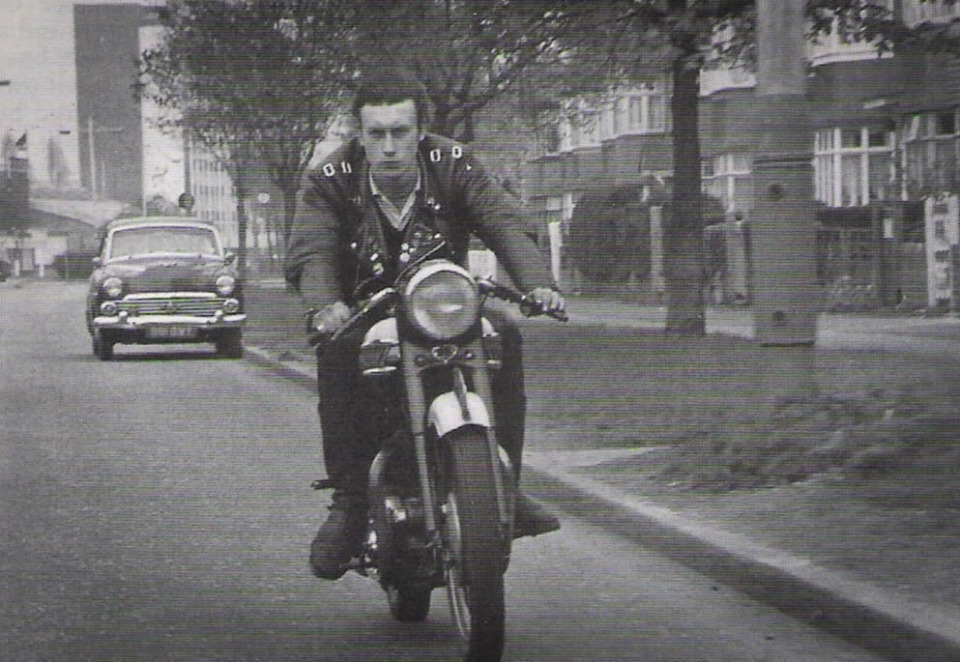
Today, the 59 Club continues, with over 30,000 members in countries all over the world, while Rockers and Mods celebrate their history on much more civil terms. Rocker and Mod gatherings attract thousands around the globe as they celebrate the history of café racer culture and admire the latest handmade motorcycle creations that these one-time enemies are making today. Why does the cult of the ton-up boy persist some half century after appearing on British roadways? Because speed, black leathers and rock n’ roll music never go out of style.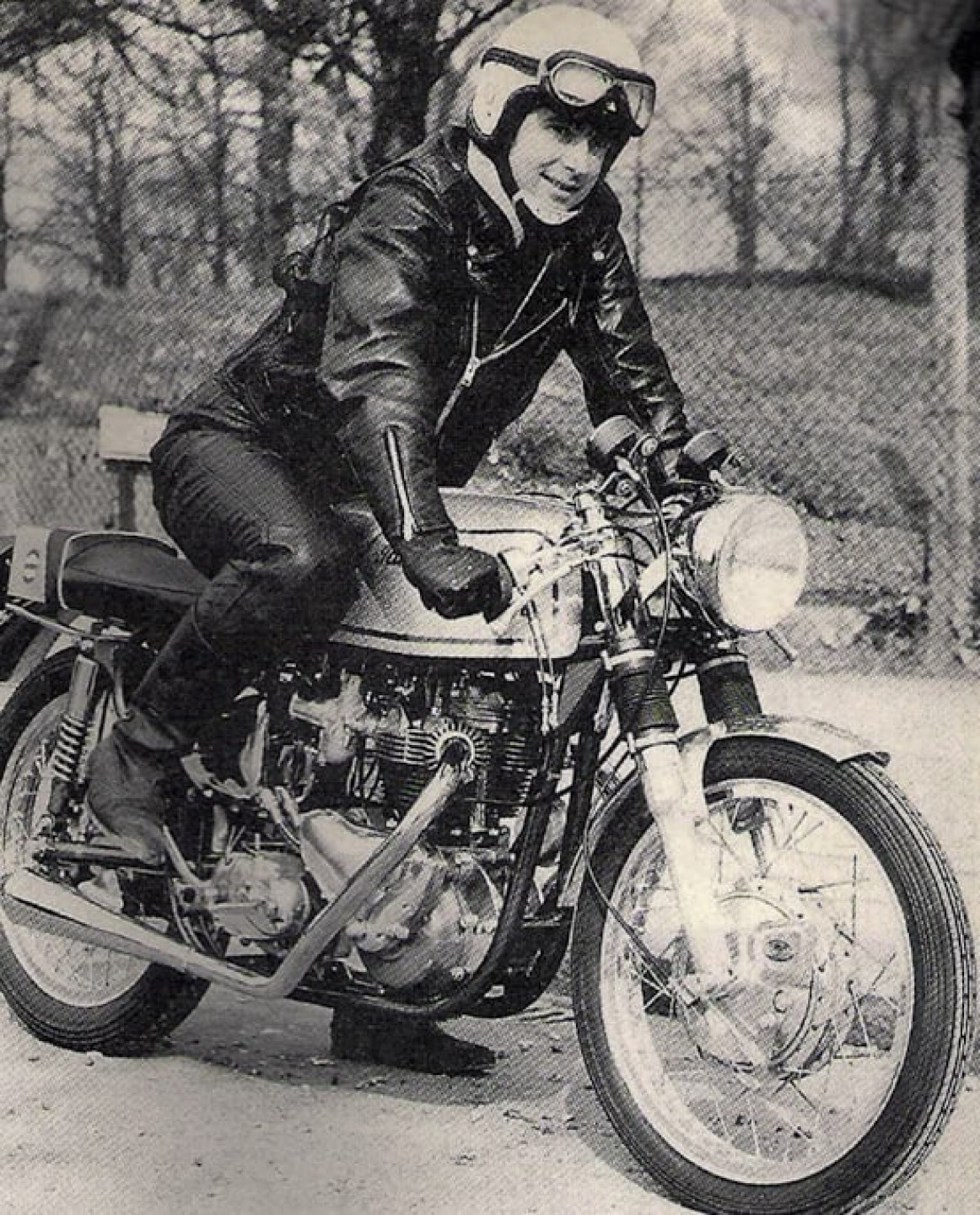
Just as the lure of music, speed and the occasional greasy bit of café fare attracted groups of local riders on their latest creations to gather 60 years ago, today riders from all over the world gather at their favorite local spots regularly to debate and test out the latest go-fast modifications made to their bikes and share harrowing tales of late night runs through the local twisties. But while the technology of the bikes and the spirit of their riders may remain brutally simple and purpose driven, the age of instant global communication has brought these disparate groups of riders together world-wide.
In addition to gathering locally, riders can now gather virtually 24/7 from around the world via the Internet to share ideas and show off their latest creations. Online communities like DO THE TON, which were borne out of a local need to organize rides have exploded in popularity to include thousands of members from every corner of the world, all with common interests. Those same interests that have brought riders together for the last 60 years – chasing that elusive goal of making your bike unique and fast enough to be able to say you’ve done the ton and sharing the experience with your mates.
Credit: caferacertv
 Follow
3.6K
Follow
3.6K

